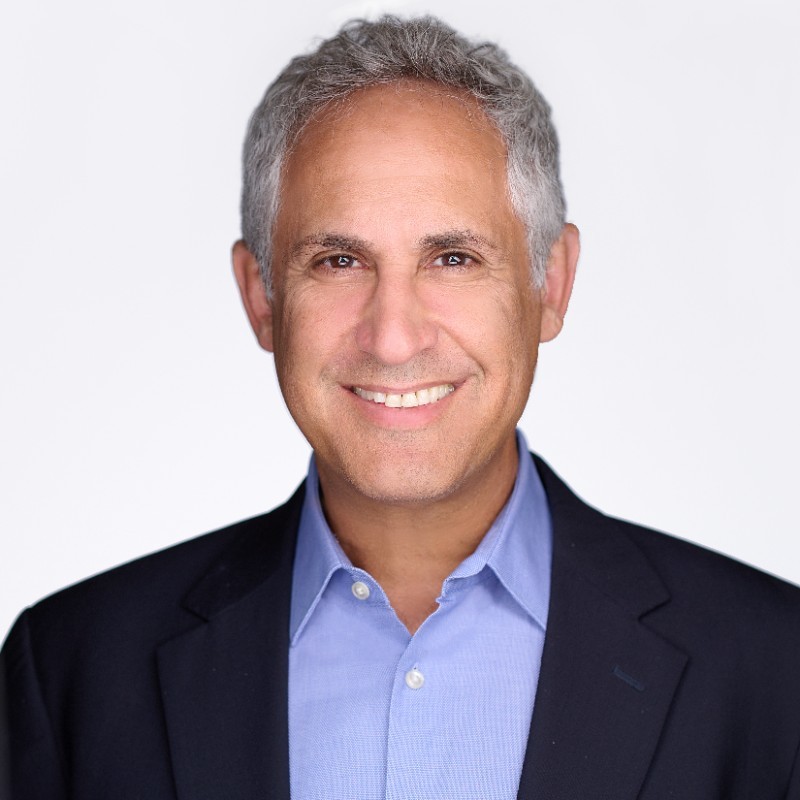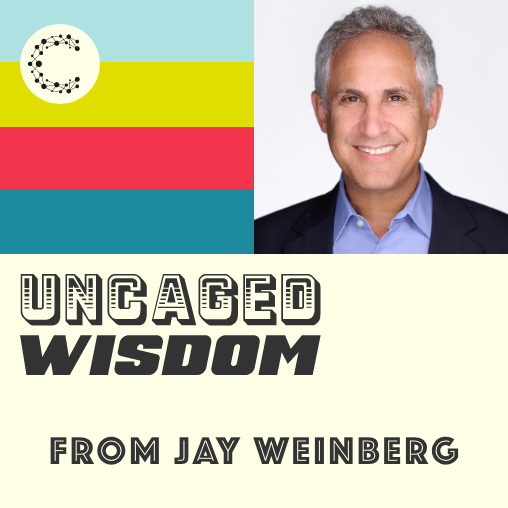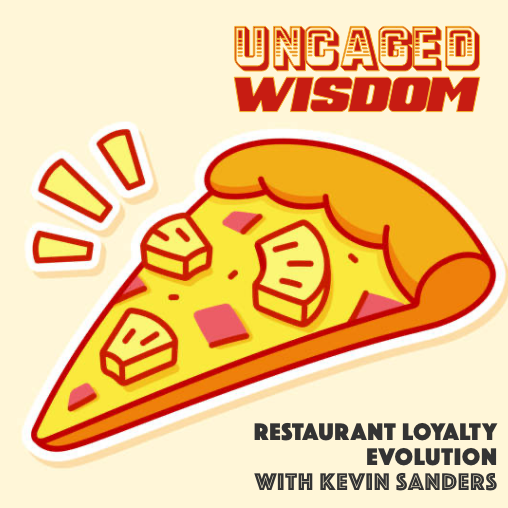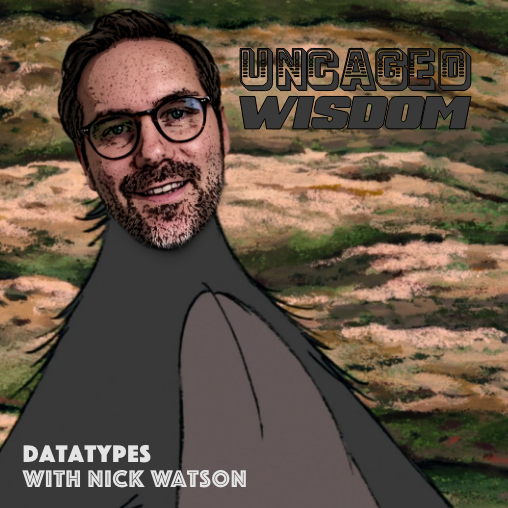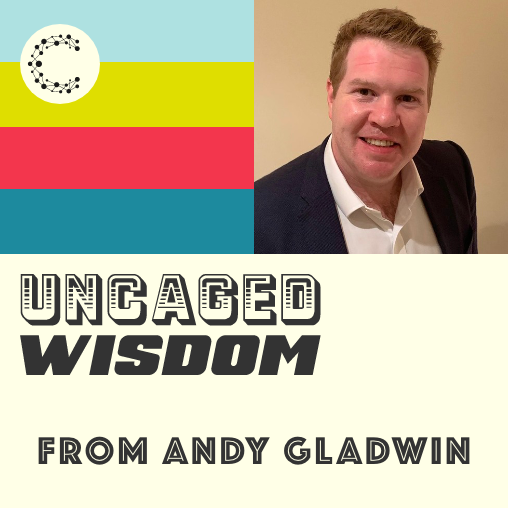Why Financial Modeling is Crucial to a Successful Loyalty Program w/ Jay Weinberg
- 0.5
- 1
- 1.25
- 1.5
- 1.75
- 2
Jay Weinberg: So long and thanks for all the Phish.
Speaker 2: UnCaged Wisdom, Cheetah Digital's Podcast for Modern Marketing.
Julian: Today, we have a special, special recording session. We have Jay Weinberg of the brilliant Ascendant Loyalty Marketing consultancy, and very, very good friends of Cheetah Digital. Today, we're looking at financial modeling. And because it's such an important topic and frankly, something that can get overlooked, even though really it should be at the heart of everything that you're thinking about when it comes to loyalty or setting up a loyalty or evolving a loyalty program, we're going to break it down into three parts. But before we start Jay, and before I start getting onto the theme of all things trilogy, could you introduce yourself and the work of Ascendant?
Jay Weinberg: Sure. Thanks, Julian. Really great to be here. Always a pleasure to be working with Cheetah Digital. We've been working with you guys for quite a while, both here in the United States and in Japan, as you know. And my name, again, is Jay Weinberg and I am the Co- Founder and Partner at Ascendant Loyalty Marketing. I've been in this business, the loyalty marketing business for, gosh, well over 25 years now. I've been basically on entrepreneurial side of the business, as you would say for the vast majority of that, working with clients in various industries. Ascendant Loyalty Marketing has been around for about three years. My partner, David Slavick and I developed that brand and we've been working basically end to end loyalty marketing is how we build it. We can do basically everything from strategic planning to designing loyalty marketing programs, developing those programs, and managing those and all aspects, including financial modeling for loyalty programs, which is what we're talking about today, the value proposition and benefits, the technology needed to support loyalty programs, the analytics, the philosophies and strategies around acquisition for loyalty programs and everything in between.
Julian: From our perspective, the selfish Cheetah perspective, we try and we do quite a good job of providing the right tools to build a loyalty program with, but the work that you and David do, especially in coming up with the strategy and really consulting on how a program should look, it's invaluable. So how do you guys approach the brands that you work with to help them point in the right direction? It's great having technology, but if you don't really know how to deploy it, you can be in a bit of a pickle.
Jay Weinberg: That's absolutely true. The way we do is we have a methodology, a very proven methodology that I've certainly been using over the past 20 years. David's been using it as well. And it really starts with this discovery, this strategy phase. Before you begin to design a program, you really need to have the right kind of strategy. A lot of companies will come thinking that they need a rewards program, a points- based rewards program, because a lot of people kind of conflate the term loyalty program with rewards program, whereas rewards program is really a subset of a loyalty program. It doesn't necessarily have to be rewards. But many of them come with this notion in mind that a points- based program makes the most sense for them or that's what they want, and what we find is it may or may not make the most sense for them. There are certain parameters and situations that a points- based rewards program would work well. In other situations, it wouldn't. And we take a look at the landscape and current situation and future- predicted situation of their business and their industry. We take a look at the data that they have and run it through its paces to determine what is their current state of customer loyalty, of customer retention, of lifetime value of acquisition? Where are they now? What are the issues? We look at the landscape of their industry and their competition. What are they doing? We talk with their customers, we talk with their stakeholders, we do market research, and we basically figure out where's the white space. What's the best approach? This is where, again, financial modeling comes into play in one sense, to look at where they are now and maybe predict what makes the most sense for them in the future. So this whole discovery phase is really the part that determines the marketing strategy for the loyalty program. And it culminates in a comprehensive strategic plan that builds the business case for loyalty marketing, whatever that case may be. It may be none. It may be something completely surprising or different than what the brand may have expected, or it may be very closely aligned.
Speaker 4: Small world, Dr. Jones, too small for two of us.
Speaker 5: This was the second time I've had to reclaim my property from you.
Speaker 6: That belongs in a museum.
Speaker 5: So do you.
Julian: Jay, kick us off properly for this first part. Could you just really set the scene for the importance of financial modeling?
Jay Weinberg: Absolutely. Well, think about a presentation that you received or a proposal that you've received in the past. And the first thing you do is flip through to the last page to look at the price. That's what everyone does. And it really shows you the importance of finances when it comes to making any kind of decision. So a loyalty marketing program, of course, is a really important program in any marketing mix. So the finances of that are a little different. It's not as straightforward and simple as buy this media, wait for a return and add up the value. It is a little bit more complex and different. It is a longterm kind of program. It's not a set it and forget it kind of program. And what I always tell clients is that with a loyalty marketing program, you need to have patience. It takes time to work. And through the financial model, we can show why it takes time to work and why you need to have patience, because you'll be able to see that if you stick with this and it works and you execute well, then there's an amazing payoff six months, a year, two years out, whatever that number is. But again, you need to have patience. And financial modeling is really important because you need to show that. One of the things as well is the value proposition is probably the most important aspect or factor in the success of a loyalty program. Okay? So the value proposition being, what are you giving to the customer? And what are you asking for in return, that value exchange? And financial modeling is really the only way to predict the outcome of your decision parameters of what you're giving away and what you're expecting and requiring from your customer to do. That's really the only way that you can come up with the right value proposition and ensure that it's in balance. Ensure that it's not too rich of a program because if you go out too rich, then it's going to be really hard to overcome that in terms of getting the customer to do what you need to do and pay you for the program. If it's not rich enough, then, of course, you run the risk of the customer not being engaged and the program failing in that sense where there's really just no engagement and no incentive for incremental behavior. So you really need to have the program in balance and the financial model will help determine how you structure the program. What kinds of benefits? How much of those benefits go into cost? What does the customer have to do? All of those parameters and many, many more can be predicted and evaluated in a financial model to show the breakeven or the potential ROI that you're looking for.
Julian: Who typically should be part of this conversation? Who should be there at the beginning? Often people get brought in at different stages and actually, if they'd all been put in the same room at the same time, it might have been slightly easier. And I'm sure you've seen that happen many a time. When it comes to this area of financial modeling, who do you like to see, or who would you ask to be brought in when you're going through this from the very beginning?
Jay Weinberg: Well, that's a really great question, Julian, and I can tell you that there are a lot of people, a lot of stakeholders who I would recommend be involved in this process, whether it's seeing the outcome or actually providing the information and parameters to structure the financial model. But there's one person that I would say is a must. And that is either the CFO or a representative from the finance group absolutely, positively must see this and must be on board because I have seen a number of times where the CFO or the finance representative has literally put a spike or figuratively put a spike in the program. They're looking at this in a different way than the marketing people are looking at it. So it's really important. They're looking at it from a dollars and cents standpoint. Marketing people are looking at it more from a business transactional relationship standpoint and business intelligence and philosophical marketing and all those things, whereas the CFO is just saying, how much is this costing and how much are we getting back? And how are you structuring that, and do I believe you?
Julian: Which is another reason why this model is so important because if the model is done correctly and suddenly you've got a proper thought process and some accompanying numbers, I'm sure, to actually be presenting it, either/ or developing with the CFO. So suddenly you won't be derailed by that as a wild card.
Jay Weinberg: Yeah, that's true. Well, I'll tell you one thing too, is that if, for example, the loyalty program is a points- based rewards program, where you have a currency, what you're creating with a program like that, the nature of it is liability. So just like a gift card, in a sense, you are giving people the ability to buy from you without paying money with a different currency at a later point in time. So you have this liability out there in the marketplace. And the finance group will look at this. Of course, it's really important that they track this well and they report on it the way it needs to be. And that's something that the loyalty program and the financial model is the only way. The financial model is really the only way that you can predict and track that and make sure that all of the stakeholders understand that, yes, we are putting this liability out there. We understand it. But if we look at how this plays out over time, that having that liability out there is actually a positive thing. And we are going to see a return on that investment in the future.
Speaker 6: Gosh, you didn't even look at it.
Speaker 7: This is more serious than I thought. Apparently your mother is amorously infatuated with you instead of your father.
Speaker 6: Whoa, wait a minute. Doc, are you trying to tell me that my mother has got the hots for me?
Speaker 7: Precisely.
Speaker 6: Whoa, this is heavy.
Speaker 7: There's that word again, heavy. Why are things so heavy in the future? Is there a problem with the earth's gravitational pull?
Julian: Great job there, Jay. Thank you for underscoring the importance of a financial model. And I don't think there'll be anyone listening, who can't see why it's such a fundamental piece. We've also just covered who should be invited in the room and yeah, make sure someone's paying the bills and checking that it's all working from the CFO level and get buy- in there. And before we break down the elements and the key terms that we should be considering, I'm wondering actually, in terms of use cases, how do you set that up? Or in terms of framing it for people to understand, what are the use cases of a financial model?
Jay Weinberg: There are really three main use cases for doing financial modeling. One is to assess your current situation. So if you have a program right now, whatever kind of loyalty marketing program it is, a good financial model will help understand where you are in your current situation. It allows you to pinpoint any issues, where they lie within your program. It allows you to understand the dynamics between the benefits you're providing, the costs of the program, how your customers are behaving from transactional, non- transactional standpoints. So it allows you to really assess where you are today and determine where you need to be and where the gaps are. The second is something that's probably the most common and what we think about when we do financial pro formas and financial modeling, which is the business case for a loyalty marketing program. So that's going to show the potential value of a loyalty program, whether it's new or revamped that you can have on the top line and mainly at the bottom line. It can predict how much incremental spending is going to be needed by your customers to breakeven or hit a certain ROI target that you're looking for. It will give you proof points for budgeting. So if you need to know how much can we budget for these certain soft benefits, hard benefits, what should our value proposition be? This allows you to be able to do that. And as well, we talked about liability earlier. This can help predict what that program liability is going to be. And so, again, especially for the CFO, who needs to know this information and needs to evaluate that, this kind of data is really, really critical. And then I'd say the third is to benchmark program performance. And we've used these quite often. So this kind of pro forma guide measures the actual results. It is used to measure the actual results against to ensure that the targets are being met. What we'll do is, as a program launches and begins to play out in the market, each month, each quarter, whatever it happens to be, we will look at the pro forma and we'll look at actual results and compare those on certain metrics. Like, how many people have signed up or enrolled in the program? What kind of average dollar sale or whatever the equivalent is that you're seeing, how many visits or trips are you seeing, those kinds of things, both on a per member basis and an overall basis.
Frodo: I wish the Ring had never come to me. I wish none of this had happened.
Speaker 11: So do all who live to see such times. But that is not for them to decide. All we have to decide is what to do with the time that is given to us. There are other forces at work in this world, Frodo, besides that of evil. Bilbo was meant to find the Ring, in which case you also were meant to have it. And that is an encouraging thought.
Speaker 2: Subscribe to UnCaged Wisdom for the latest and greatest in digital marketing insights and how they're solving problems with software and strategies.
DESCRIPTION
Today's episode is the first part of a loyalty trilogy with guest Jay Weinberg. Jay is a Marketing Strategy Expert at Ascendant Loyalty Marking. He discusses financial modeling for loyalty programs by breaking the topic into three essential parts:
• Why Financial Modeling is crucial to a successful loyalty program
• A breakdown of the critical elements of Financial Modeling
• A deep dive into the complexity of Financial Modeling for loyalty programs.
Listen now to start building your Financial Model for a more successful program.
Today's Guests
